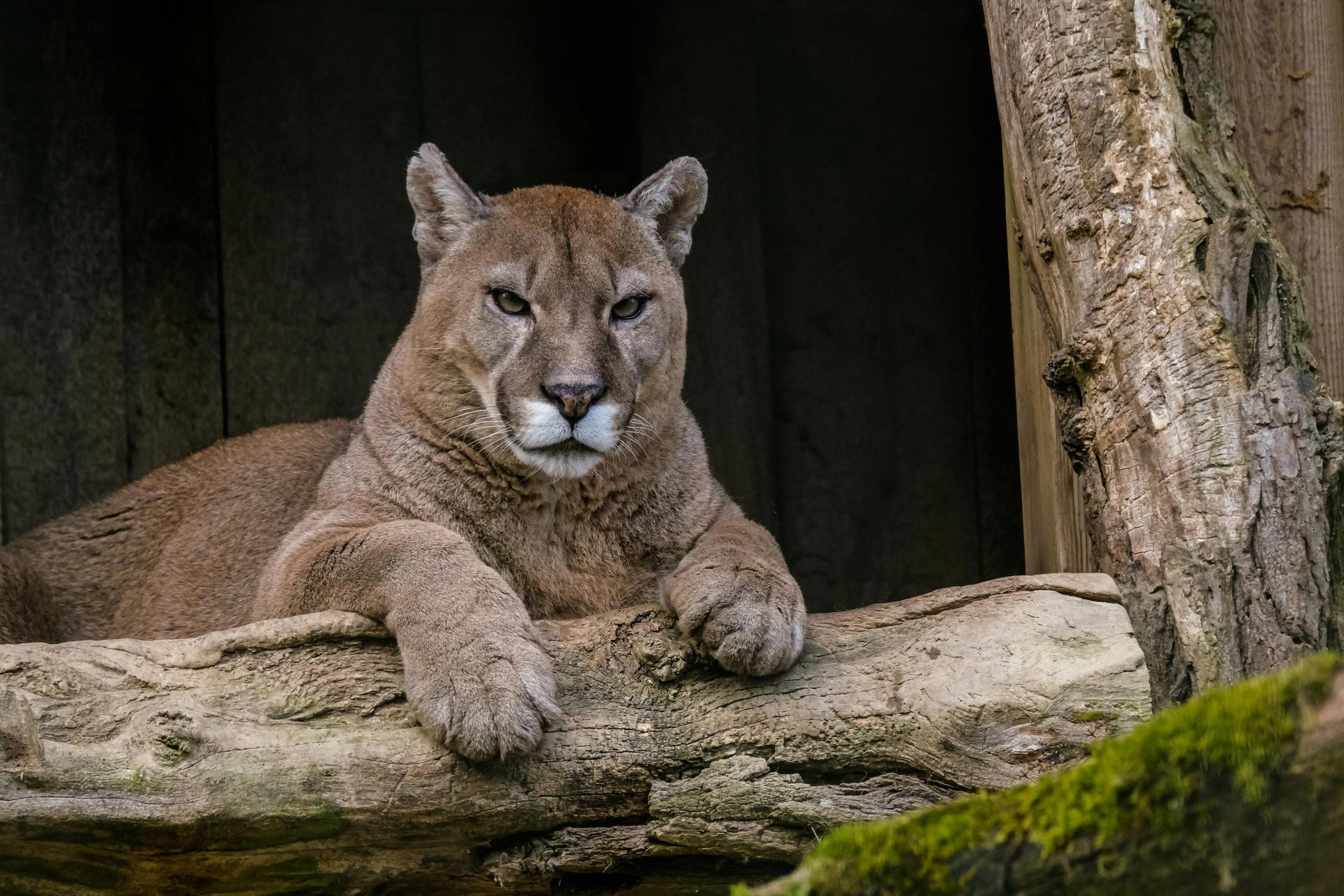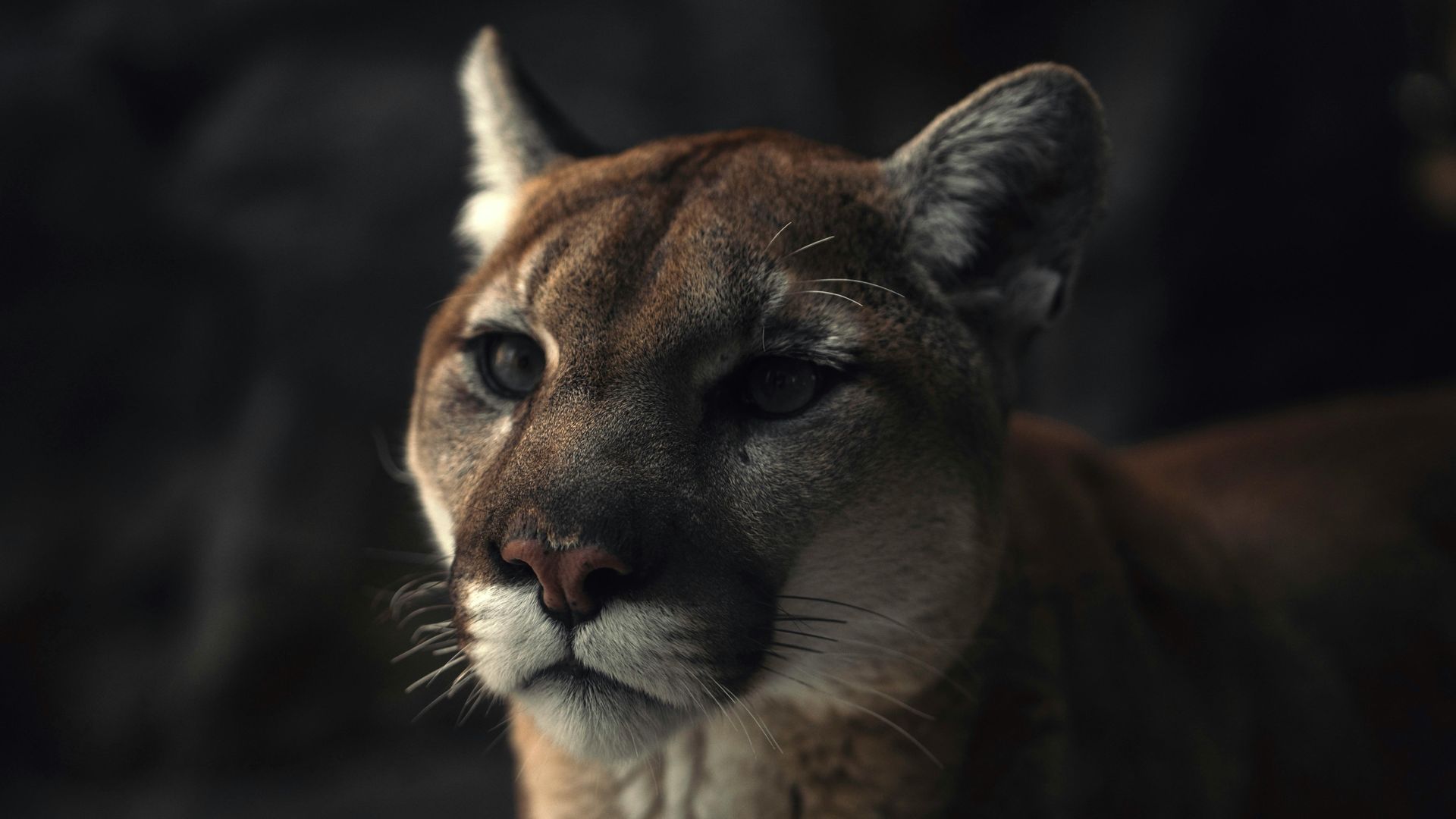Mountain lions, also known as cougars, pumas, or panthers, are large, powerful cats native to North and South America. They are known for their adaptability and elusive nature, inhabiting a wide range of environments, from dense forests and deserts to mountainous regions and urban edges. As apex predators, mountain lions play a critical role in maintaining healthy ecosystems by regulating prey populations.
Mountain lions are among the largest wild cats in North America, weighing between 75 and 200 pounds and measuring up to 8 feet in length, including their long, muscular tails. Their short, tawny coats help them blend into their surroundings, while their powerful hind legs allow them to leap up to 15 feet vertically and 40 feet horizontally. These solitary hunters primarily prey on deer, but they also eat smaller mammals such as raccoons, rabbits, and rodents.
Mountain lions are highly territorial, with males occupying large home ranges that may overlap with several females. Mating can occur year-round, and females give birth to litters of 1-6 kittens, which they raise alone. Kittens remain with their mother for up to two years, learning essential survival skills before dispersing to establish their own territories.
Natural predators of mountain lions are few, with humans posing the greatest threat through habitat fragmentation, hunting, and vehicle collisions. Despite these challenges, mountain lion populations remain stable in many areas due to their adaptability.

For your safety and the well-being of wildlife, please observe animals from a distance and avoid touching or disturbing them. If you encounter an animal that appears injured or in distress, contact a licensed wildlife rescue organization for guidance before intervening.
Found An Animal? Not sure how to help a wild animal in need? Learn when to step in, who to call, and how to help safely.
Did You Know?
- Mountain lions have the largest range of any wild terrestrial mammal in the Western Hemisphere.
- Their scientific name, Puma concolor, means “cat of one color.”
- Mountain lions can run up to 50 miles per hour in short bursts.
- Unlike other large cats, mountain lions do not roar; instead, they communicate through purrs, chirps, whistles, and hisses.
- A single mountain lion can consume up to 20 pounds of meat in one meal.
- Mountain lions are excellent climbers and often rest in trees to avoid danger.
- They can detect prey from a distance of up to a mile using their acute senses of hearing and smell.
- Mountain lion kittens are born with blue eyes and spotted coats, which fade as they mature.
- The mountain lion’s tail is nearly one-third of its body length and helps with balance during high-speed pursuits.
Problems Faced In The Wild
- Habitat Loss: Urban development reduces available territory and prey sources.
- Vehicle Collisions: Roads fragment habitats, leading to high mortality rates.
- Human-Wildlife Conflict: Encounters with humans often result in lethal control measures.
- Poaching and Illegal Hunting: Mountain lions are sometimes targeted for sport or retaliation.
- Climate Change: Shifts in prey availability and habitat conditions can impact survival.
- Disease: Mountain lions are susceptible to diseases such as feline leukemia virus (FeLV) and mange.
- Poisoning: Secondary poisoning from consuming prey affected by rodenticides is a significant threat.
Tips For Cohabitation
- Secure Livestock and Pets: Use enclosures and avoid leaving pets outdoors at night.
- Avoid Feeding Wildlife: Reducing food attractants minimizes mountain lion presence in residential areas.
- Install Motion-Activated Lights: These can help deter mountain lions from approaching homes.
- Stay Alert on Trails: When hiking, make noise and travel in groups to avoid surprise encounters.
- Preserve Natural Habitats: Support conservation efforts that protect open spaces and wildlife corridors.
- Educate Others: Share information on mountain lion behavior and how to reduce conflicts.



